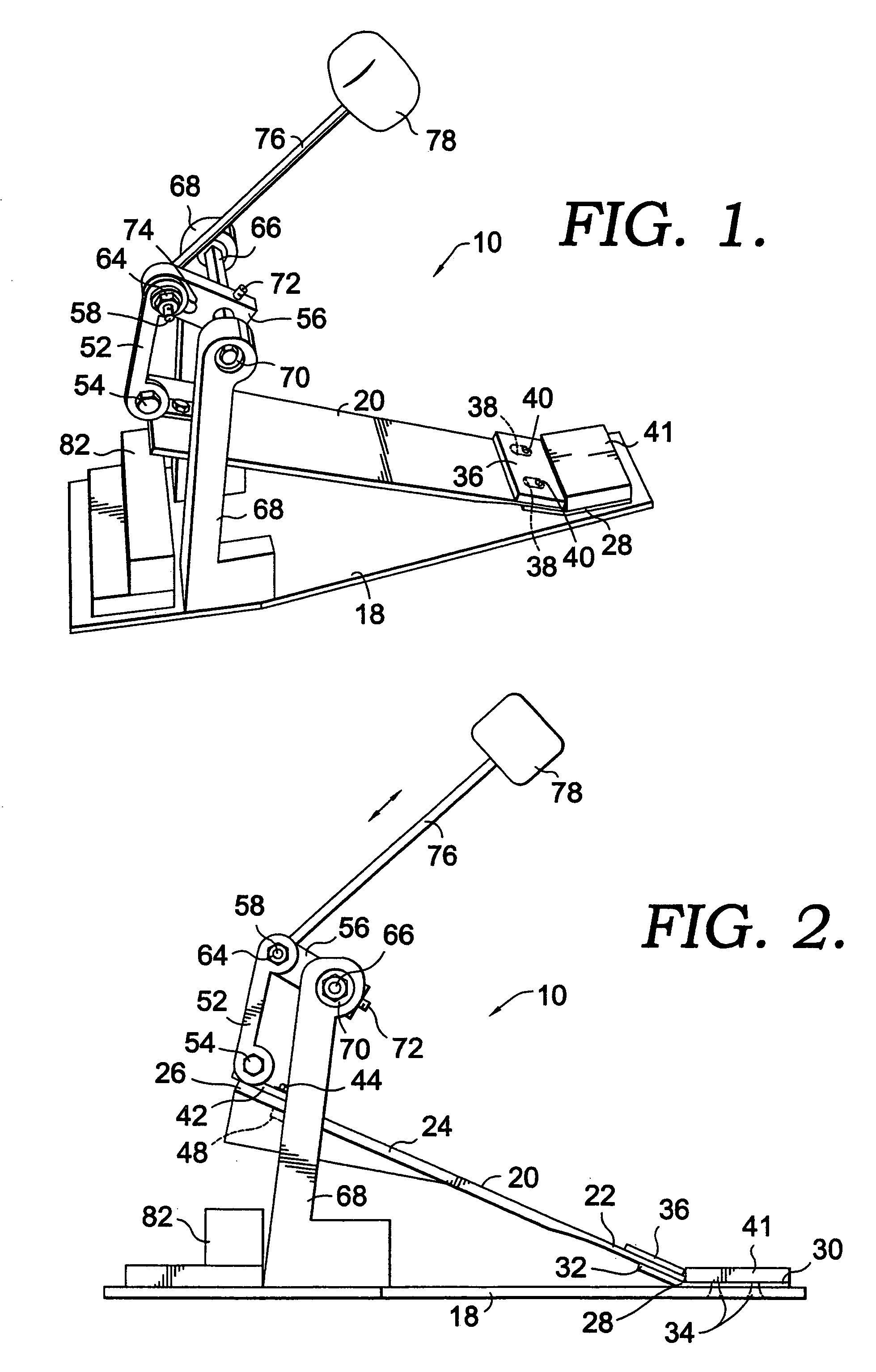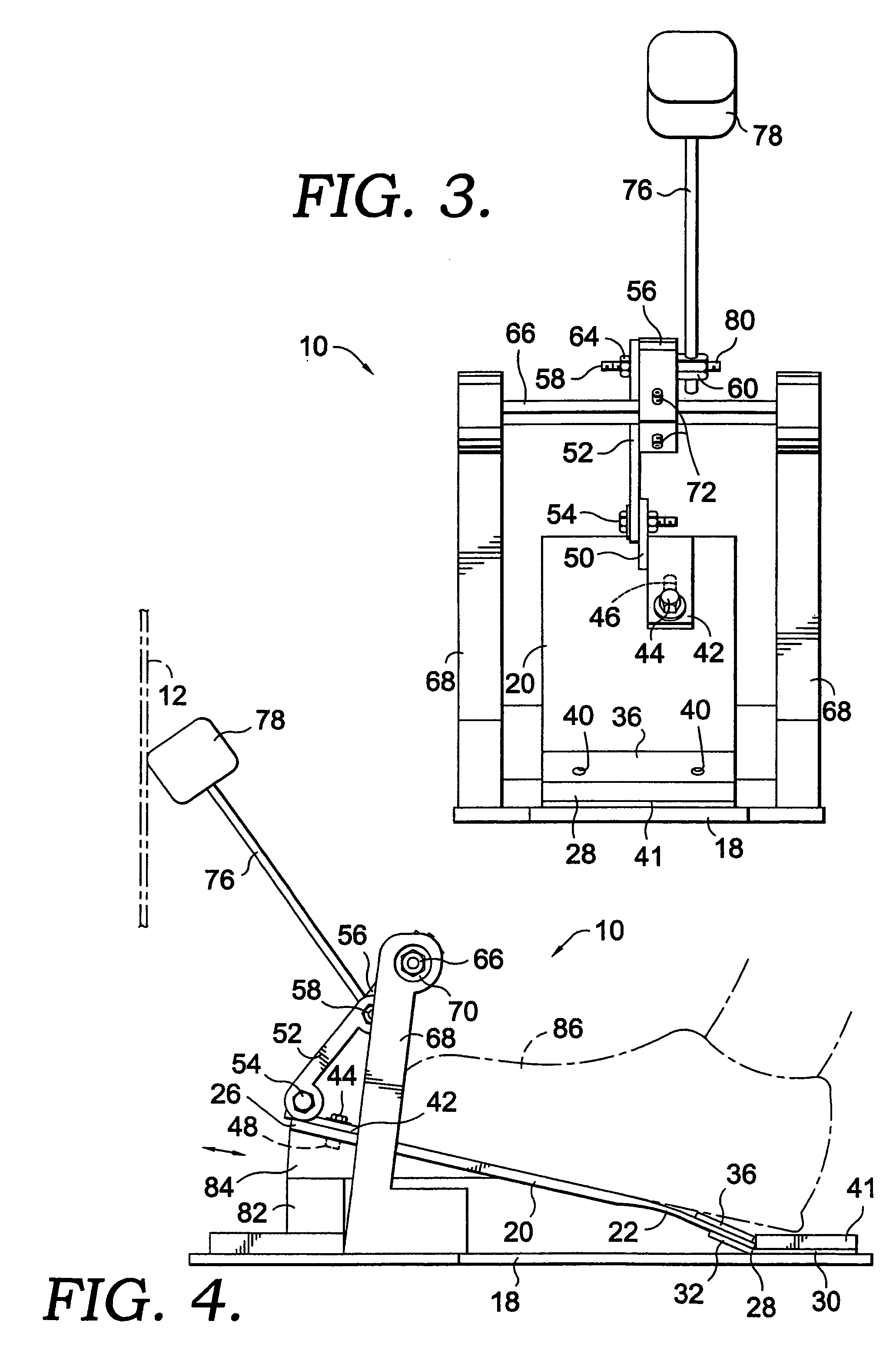Pedal assembly for musical instruments
- Summary
- Abstract
- Description
- Claims
- Application Information
AI Technical Summary
Benefits of technology
Problems solved by technology
Method used
Image
Examples
Embodiment Construction
[0025]Referring now to the drawings in more detail, numeral 10 generally designates a musical pedal assembly which is operated by the foot of a user to play musical instruments such as a bass drum 12 (FIG. 4) or a high hat cymbal assembly 14 (see FIG. 5), as well as other percussion sounds including cowbells, woodblocks and others. The pedal assembly 10 includes a flat base plate 18 which rests on a floor, stage or other support surface. Mounted to the base plate 18 is a pedal board 20 which is constructed of a composite material that is inherently flexible and resilient. The pedal 20 may be rectangular and includes a heel portion 22 which is formed on one end of a body portion 24 of the pedal board. The heel portion 22 has a lesser thickness than the body portion 24, as best shown in FIGS. 2 and 4. Preferably, the heel portion 22 has a length that occupies approximately 20% of the full length of the pedal 20. The body 24 terminates in a toe portion 26 located on the end of the peda...
PUM
 Login to View More
Login to View More Abstract
Description
Claims
Application Information
 Login to View More
Login to View More - R&D
- Intellectual Property
- Life Sciences
- Materials
- Tech Scout
- Unparalleled Data Quality
- Higher Quality Content
- 60% Fewer Hallucinations
Browse by: Latest US Patents, China's latest patents, Technical Efficacy Thesaurus, Application Domain, Technology Topic, Popular Technical Reports.
© 2025 PatSnap. All rights reserved.Legal|Privacy policy|Modern Slavery Act Transparency Statement|Sitemap|About US| Contact US: help@patsnap.com



